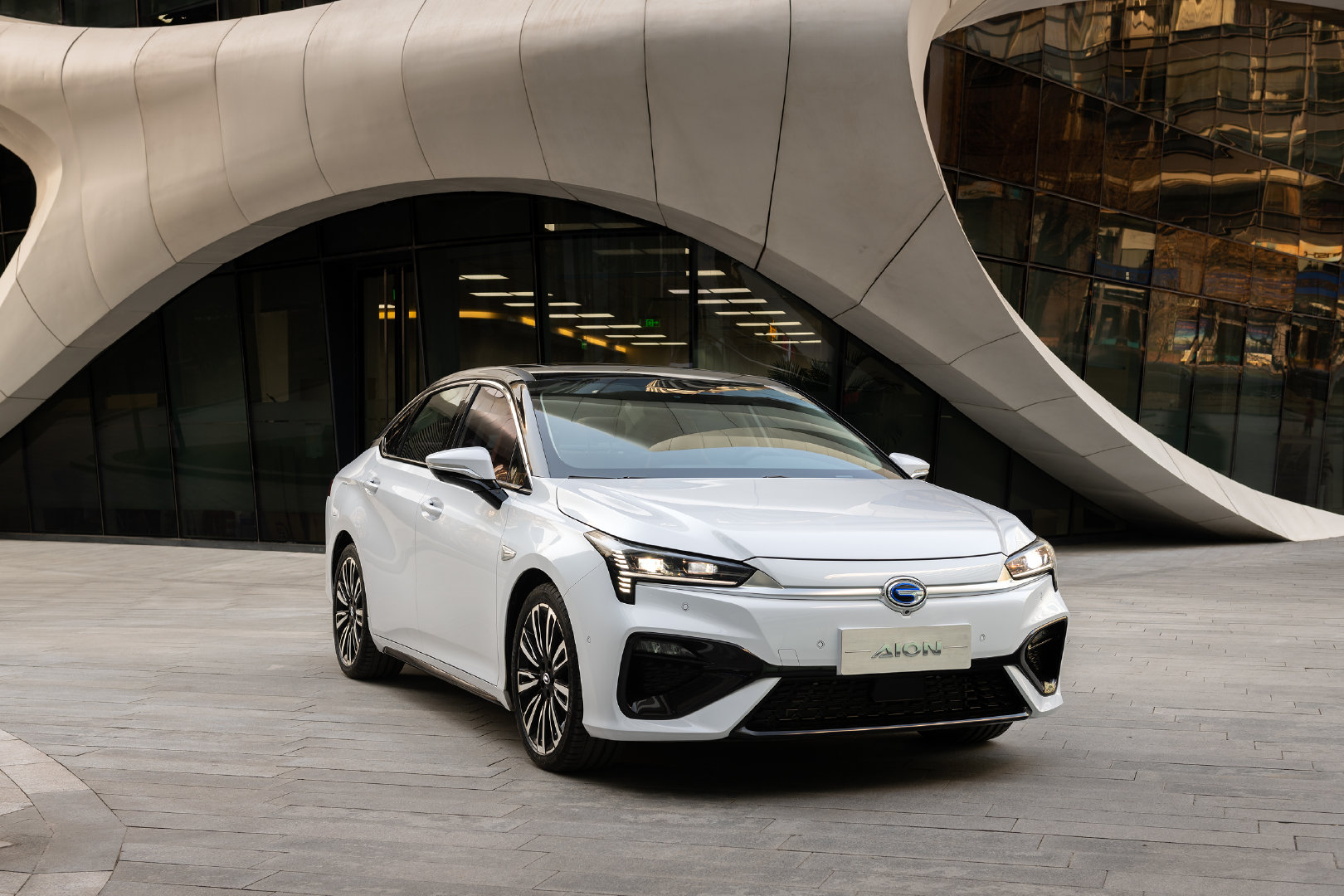On March 1st, Aion S held a pre-sale launch event at Guangzhou New Energy Automobile Co.’s factory. Coincidentally, at 6 o’clock in the morning on the same day, Tesla announced a series of policy changes that grabbed the headlines of major automotive media over the past few days. Unfortunately, Aion S’s presence is too low compared to Tesla.
However, whether it’s the highlights of the car itself or the flaws in its marketing, this car is still worth discussing. In the first half of this article, I will analyze the product strength of Aion S from a rational data perspective. In the second half, I may be biased in discussing the flaws in its marketing.
Complicated car name
First question, how many people know how to pronounce the name of this car?
Before it was launched, this car was always discussed with the internal code name A26. After it officially debuted at the Guangzhou Auto Show, it got its name: Aion S. Four consecutive vowels make it quite difficult for someone who doesn’t speak English well like me. Every time I say the name of the car in front of my friends, I feel like my tongue is unnecessary.
Fortunately, at the pre-sale launch event, Aion S got its own Chinese name: “埃安.” However, it seems that not many people know this name yet. Searching for “埃安” on the official Weibo and WeChat accounts of GAC New Energy only yields one result.
The spread of the Chinese name is much lower than that of “630”. By the way, can’t they come up with a more meaningful Chinese name? Transliteration is really lazy. Anyway, now that we know the name, let’s take a look at the car.
Appearance
GAC Trumpchi’s appearance has undergone a major change since the GS8, and it has been getting better and better, as seen in the GM8. So at the Guangzhou Auto Show, I was particularly interested in what A26 would look like.
At first glance, the Aion S looks pretty good, but the overall size is smaller than I expected. With dimensions of 4768 * 1880 * 1530 mm, it’s in the range of a compact car. The exterior design is more to my taste.

However, some people think that the lines on the front end are too complicated. GAC New Energy collected everyone’s opinions and made some adjustments to the mass-produced version.
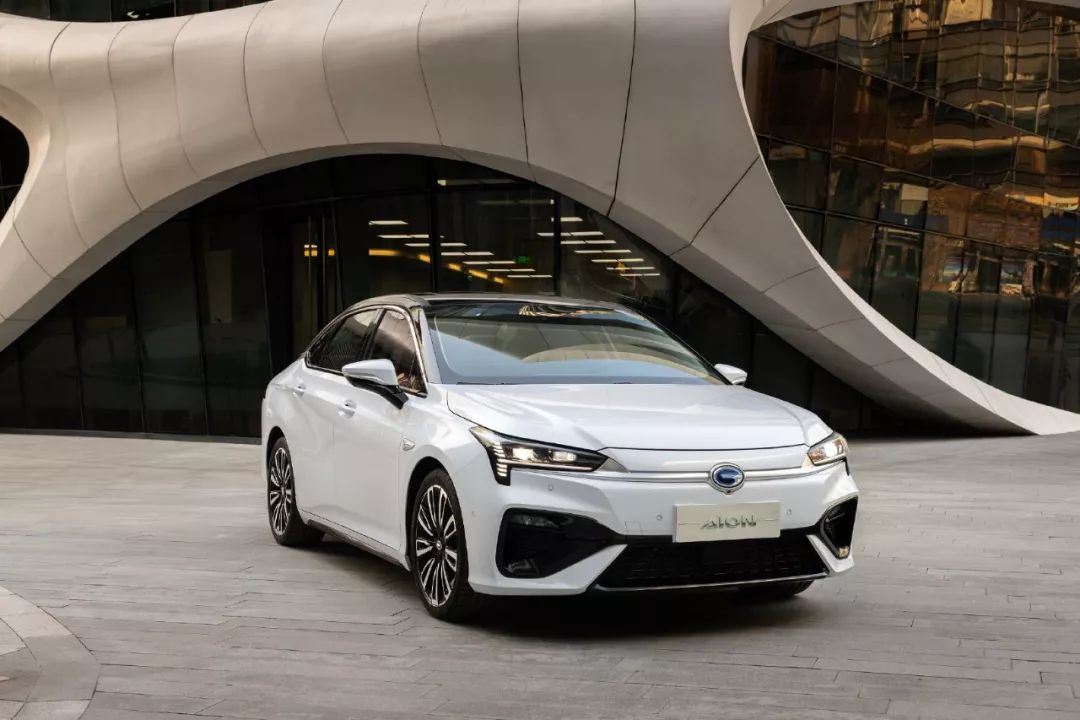 Compared to the version shown at the car expo, the biggest change is the complete closure of the air intakes on both sides of the Logo. Therefore, Aion S’s front face is basically fully enclosed, as electric cars do not require air intake and do not have high requirements for heat dissipation, so the fully enclosed front face can be designed. However, some brands directly apply the design language of fuel-powered cars to electric cars and achieve a fully enclosed front face by directly closing the air grille. This makes the whole car look very abstract.
Compared to the version shown at the car expo, the biggest change is the complete closure of the air intakes on both sides of the Logo. Therefore, Aion S’s front face is basically fully enclosed, as electric cars do not require air intake and do not have high requirements for heat dissipation, so the fully enclosed front face can be designed. However, some brands directly apply the design language of fuel-powered cars to electric cars and achieve a fully enclosed front face by directly closing the air grille. This makes the whole car look very abstract.
While using a fully enclosed front face, it is undoubtedly very friendly to wind resistance. Aion S’s wind resistance coefficient is 0.245 Cd, which is not as good as the Geely New Energy GE11’s 0.2375, but it is still quite good.
The design of the rear of the car looks a bit stingy. The taillights use a common-through design, but they still look coordinated and good.
Interior
As I have not experienced the actual car, I will not comment too much on the details, workmanship, texture, ergonomics, and space. Therefore, I will just briefly mention a few things.
The overall design of the interior is very traditional, with a double-spoke steering wheel and two horizontally arranged 12.3-inch screens that are somewhat similar to the Mercedes S-Class. The rendering of luxury is very in place, but there is no progress in technology.
However, I can understand that the target audience for this car requires luxury comfort more than technology. They need a luxurious and comfortable means of transportation.
Intelligence
The intelligence of pure electric vehicles is always a key focus for the garage, and car companies are also gradually paying attention to it. Some have started to have some involvement, but besides Tesla, no one has done it particularly well. Everyone is new to the software field. If you want to experience intelligence, you must be prepared to encounter bugs.# Aion S Claims to Achieve Entire Vehicle OTA and L2-level ADAS
Aion S claims to achieve entire vehicle OTA and L2-level ADAS, which looks beautiful, but how about the actual performance? We will have an opportunity to conduct a comprehensive evaluation after the vehicle is delivered.
Is intelligence the end of the story? There is still something worth discussing-GAC New Energy’s APP!
It is embarrassing for new energy vehicle brands to go out without their own APP. If they can sell some peripheral products on the APP, they may be able to chat more.
GAC New Energy’s APP has a mediocre UI design and fluency, but the content is quite rich, ranging from news and information to charging maps, from ordering to using cars, and even points redemption for small gifts, or rather, Dyson’s hair dryer and DJI’s drone are not “small” gifts anymore.

Here we will not introduce all of them. Let’s share some interesting ones with you.
First, the charging map is a very useful function for a pure electric vehicle owner, and the inclusion of charging piles in GAC new energy’s APP is also very rich. There is also a route planning function, but when I eagerly entered a destination, it gave me such a thing… I can’t see the route clearly, and there are no recommended charging stations along the way. What’s the use of this? I think everyone can adjust their expectations for the ease of use of scan code charging to avoid too much disappointment.

Secondly, for ordering a car, surprisingly, you can see the entire process from order generation to production to logistics to delivery, which is a first.
Judging from the current dissatisfaction of NIO and Tesla owners with delivery order, if GAC can really record and synchronize the entire process to the owners, it will indeed make them feel more comfortable.
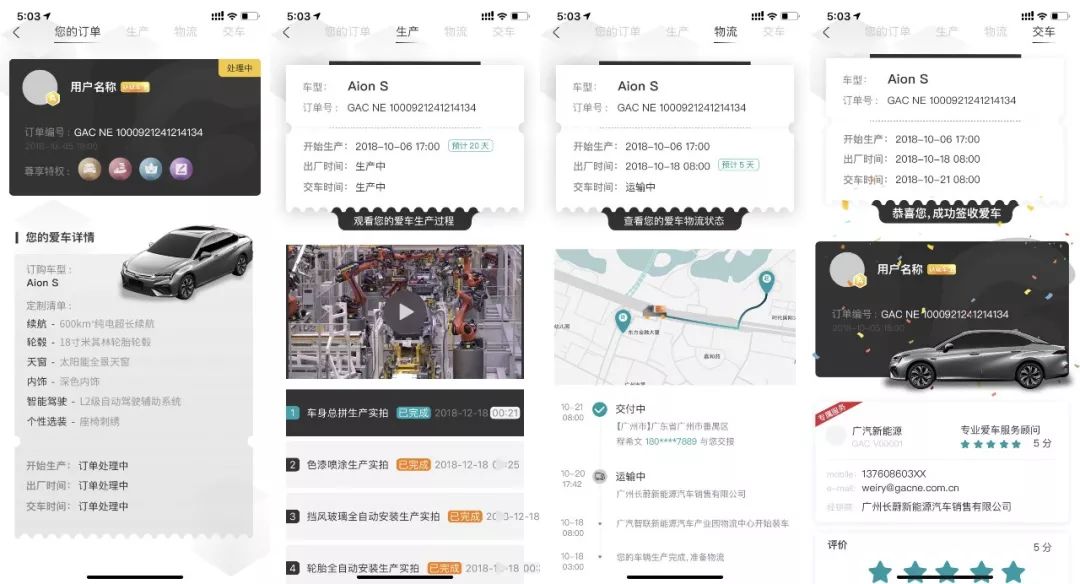
Finally, I found “one-click charging” and “digital key” in the car owner service. I don’t care about the convenience of “one-click charging”, but I am more concerned about whether the digital key can really make me get rid of physical keys and complete everything with just one phone.
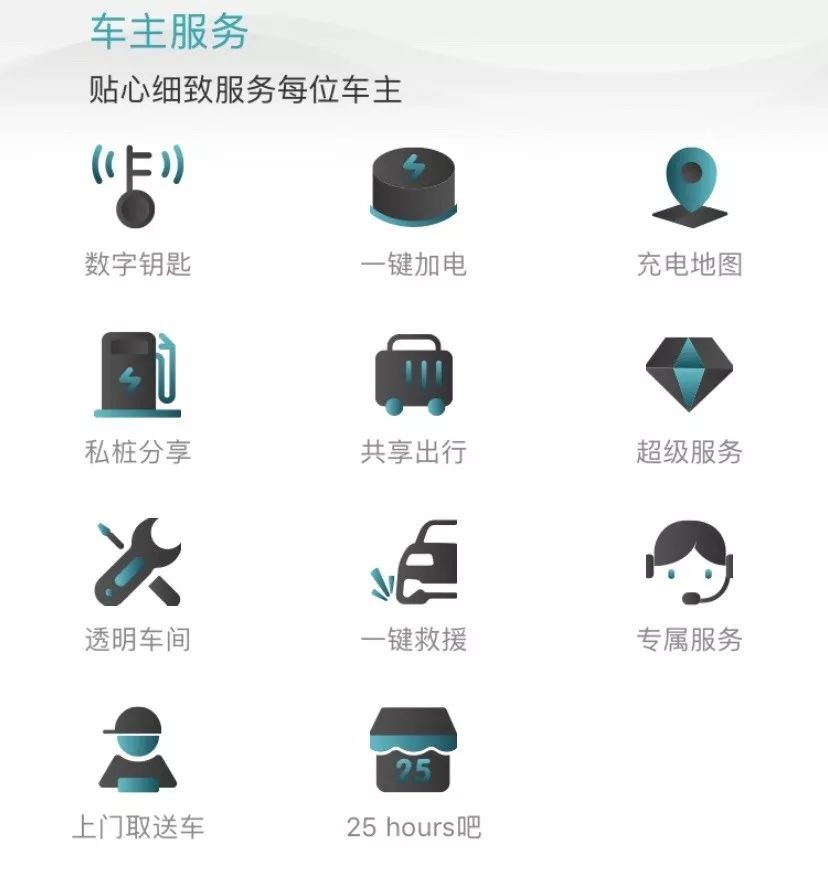
Powertrain
When it comes to powertrain, my mood is a bit complicated. Let’s take a look at the data first: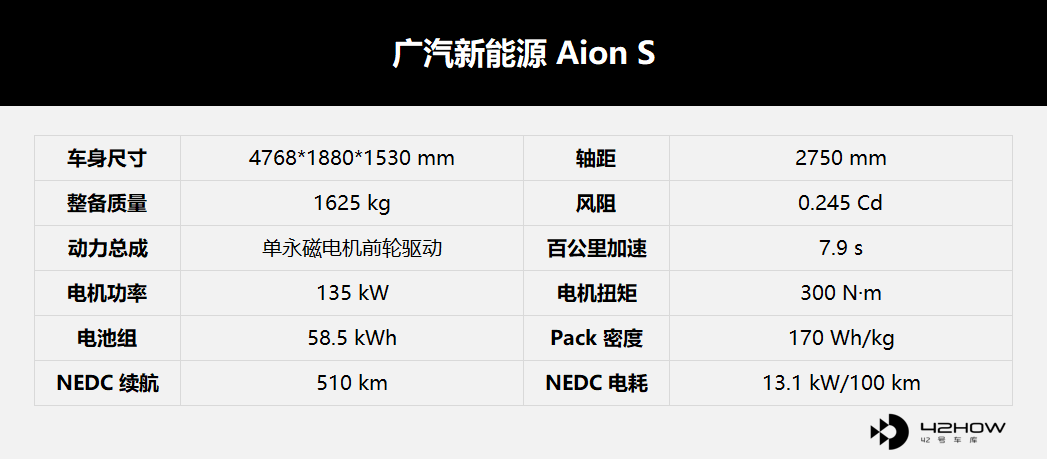
The most eye-catching aspect of the three-electricity is the battery. By the end of last year, the battery density of BYD Tang EV600 reached 161 Wh/kg, which was already a fantastic performance. And Aion S has achieved 170 Wh/kg…

The “three global firsts” displayed in the advertising page of GAC New Energy include Aion S adopting the 811 three-element lithium battery from CATL. Come on, it’s just a supplier, how can this be considered a global first?
This makes me think of a joke: the tech circles compete for the release of Qualcomm Snapdragon 855, while the automobile circles compete for the release of CATL’s 811 lithium battery…
Judging from the delivery time of the vehicles, both Aion S and NIO ES6, which uses an 84-degree battery, were delivered by the end of June this year. As for who can launch first, let’s be patient.
Energy density is one highlight, and another highlight is battery capacity and comprehensive endurance.
Looking at the battery capacity of 58.8 kWh, it’s quite ordinary. Looking at the comprehensive endurance of 510 km, it’s a good result. However, now more and more players can reach over 500 km per charge, which means it’s an excellent but not surprising result anymore.
But these two data combined together make it impressive: 58.8 kWh runs 510 km, which is really an outstanding level. Many people firmly believe that GAC New Energy did some sneaky operations in the endurance test, but before an actual test is conducted, I believe in the result of Aion S. Now let’s look at the technology behind this performance.
Several technical indicators that affect power consumption: motor efficiency, kerb weight, and drag coefficient.
Let’s look at them one by one. Aion S’s motor uses a powertrain from Japanese company Nidec, which has a high degree of integration. The entire power module integrates the motor, electronic control, and reduction gear, which is also the direction of industry development. The advantage is that it can reduce volume and weight, and the structure is more compact, but the efficiency is still uncertain.
Reducing the kerb weight will definitely benefit the comprehensive endurance. In the early years, a normal electric vehicle weighed more than two tons, but now the energy density of batteries is getting higher and higher, and the weight of the car has also decreased. Aion S’s weight is controlled at 1625 kg, which is quite good.The Aion S also boasts an excellent aerodynamic coefficient. The lower the coefficient, the lower the energy consumption during high-speed driving. However, the benefit of a low coefficient is most noticeable during high-speed driving. It provides limited improvement in driving range if used only for urban commuting.
To sum up, if the actual driving range of the Aion S can approach 450 km, it will definitely be a beneficial product for GAC New Energy. Let’s wait for the actual test results.
What? Did you say it has a solar sunroof that can charge while driving? Forget it, that thing has no advantages other than being expensive. It may even be exhausting to power a fan with that amount of generated power…
Price
Lastly, let’s talk about the price of the Aion S. GAC has only announced a pre-sale price, with starting prices of 140,000 and 160,000 yuan for two models after subsidies. The top version of the Meilink 630 is estimated to sell for around 180,000-200,000 yuan.
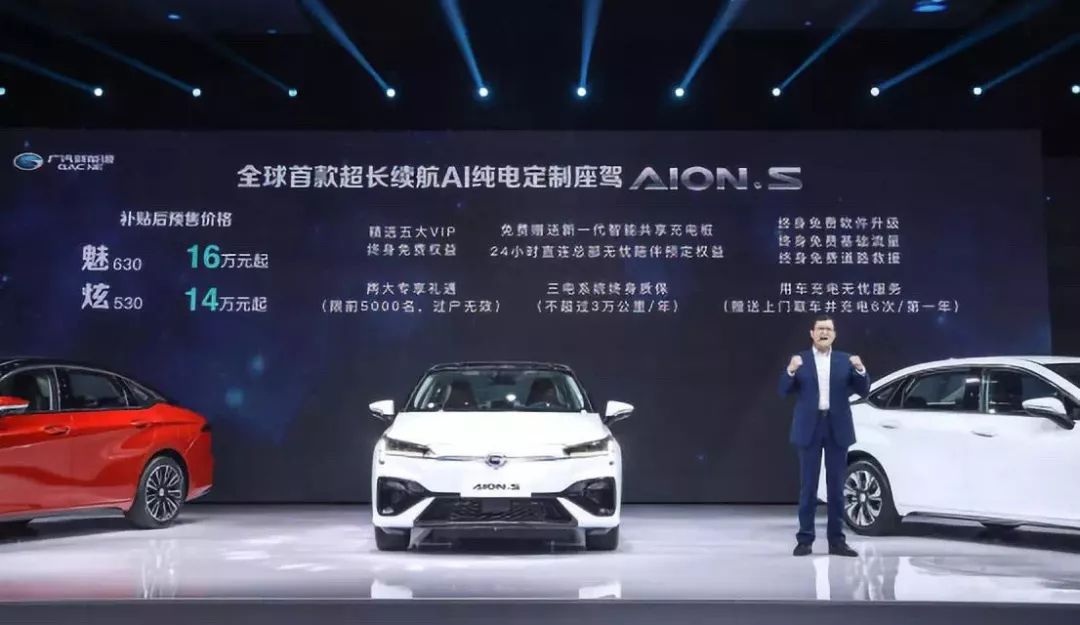
From a data perspective, the Aion S is a competitive product, and its pricing is also competitive at this level. I am personally looking forward to the actual test of this car, but…
It seems like the marketing for this car has gone wrong.
Marketing
Before its debut at the 2019 Guangzhou Auto Show, the Aion S left an impression that it had a driving range of over 600 km. We have been emphasizing that this was a range at a constant speed, but it seems that many people were misled into thinking it was a comprehensive range.
After its debut at the Guangzhou Auto Show, GAC New Energy’s official WeChat account published an article boasting about its aerodynamic coefficient, which they claimed was the same as the Model 3. Then, they compared their range at a constant speed of 60 km/h and the range of the Model 3 at EPA driving conditions. Oh, and not only was the data wrong, but the units were also wrong. The difference between miles and kilometers is more than 1.6 times.
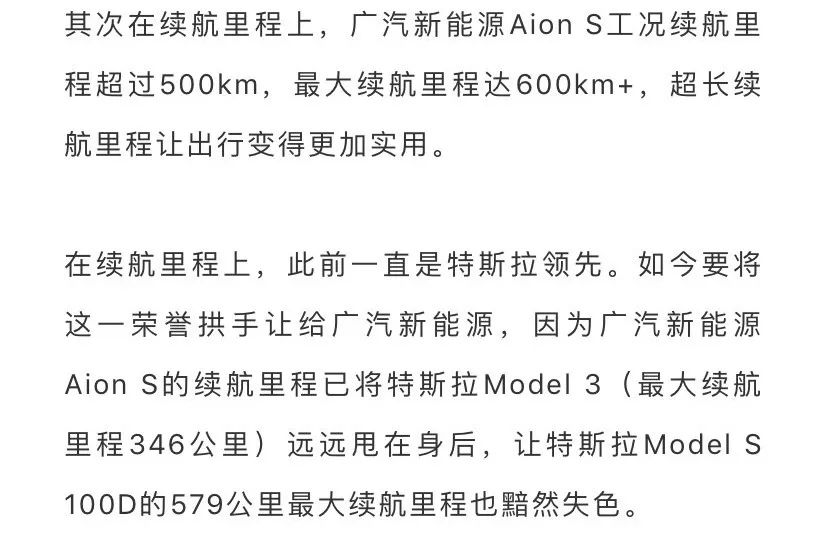
What can I say? Is it a mule or a horse? Just compare your small wooden boat with another small wooden boat, why do you have to provoke a metal battleship? You’ll just end up being the little brother.
Online promotion of the Aion S is also filled with exaggerated phrases such as “driving range of up to 630 km,” “not losing to traditional fuel cars,” “replacing fuel cars,” and “AI.” Surprisingly, its NEDC range of 510 km is rarely mentioned. Don’t think that this result is very unsatisfactory, do you?

In actual driving, the results of a 60 km/h constant speed run are even more meaningless when it is difficult to achieve even NEDC. Guangzhou Automobile repeatedly used this data to brainwash consumers, not only deceiving them, but also disgusting their competitors.
The factory next door worked hard to produce a car with a NEDC range of 500 kilometers, which has been advertised as such. You broke the game rules by promoting a 60 km/h constant speed run. If no one manages it, everyone will promote this meaningless number, and then good money will drive out bad money in the end.
In order to have a good competitive environment, I would like to say to Guangzhou Automobile New Energy: take off your exaggerated coat, and we can still be friends.


-
Stop Laughing At Baidu, Chinese Car Companies Can Only Progress By Facing The Gap
-
Exposure Of The Constant Speed Range Claim Of Electric Car Companies: Who Is Deceiving Users?

This article is a translation by ChatGPT of a Chinese report from 42HOW. If you have any questions about it, please email bd@42how.com.
